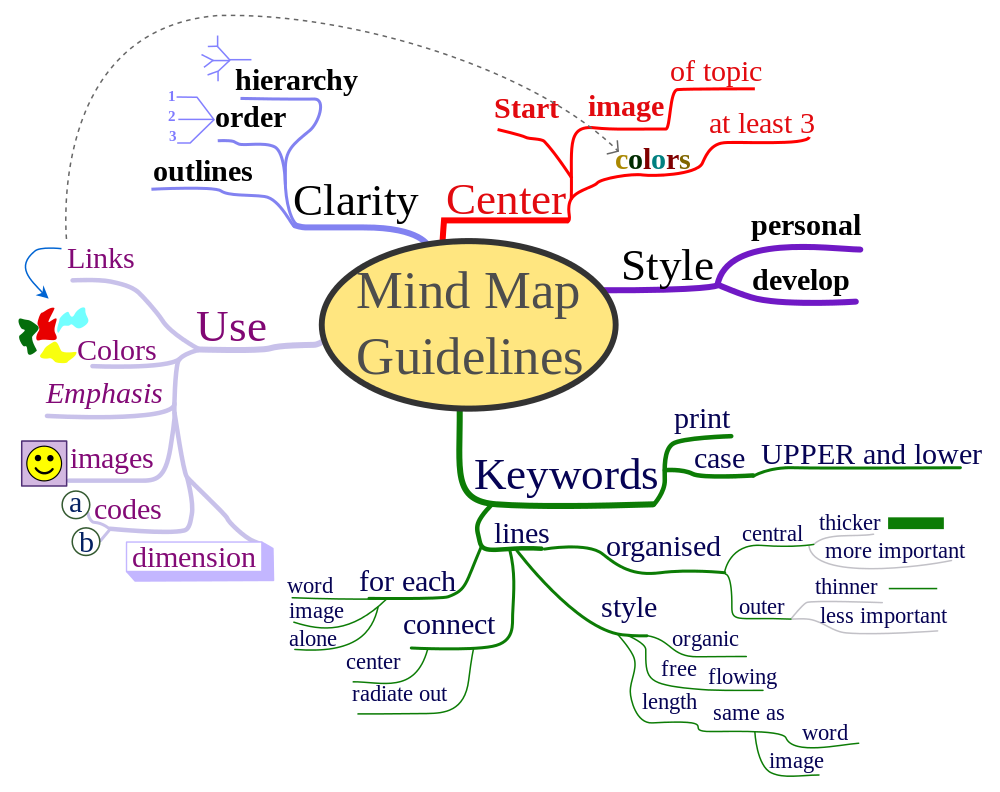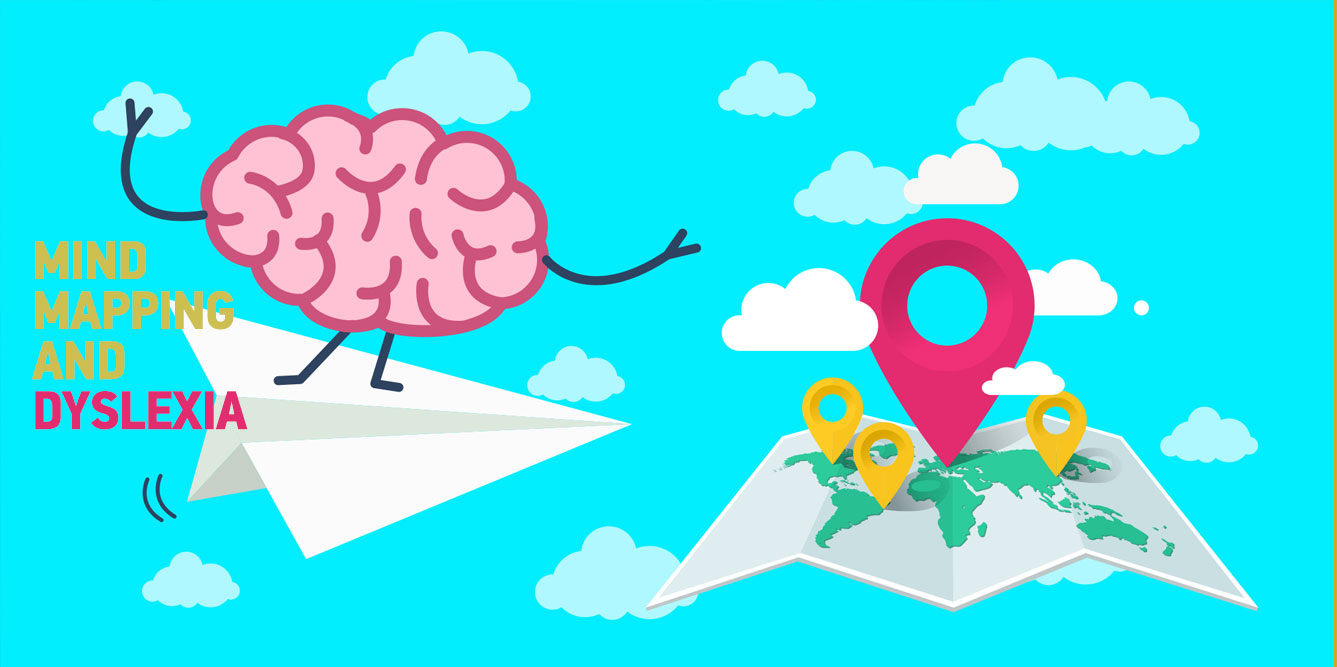The common saying “a picture is worth a thousand words” gives prominence to the idea that an image is more powerful when engraved on our mind than a multitude of words. Visual representations of ideas can function as an instructional strategy in the EFL classroom and students with dyslexia who face problems with short term memory, concentration span, sequencing information and processing information quickly may be benefited to a great extent. A mind map could be defined as “a type of visual diagram that consists of a centralized subject and related topics or ideas branching off from it in all directions. From each topic subtopics can again branch off, resulting in a radial structure” (https://www.mindmeister.com/training/mind-mapping-101/1) or “the art of writing in a language that is understandable and conceivable for the brain” (Akinoglou & Yasar, 2007, p. 35).
By Evangelia Vassilakou
Mind mapping history
The creator of mind mapping was Tony Buzan, an English author and educational consultant and an advocate of whole brain thinking. According to Buzan:
“Mind maps utilize all our cortical skills and activate the brain on all levels, making it more alert and skillful at remembering. The attractiveness of mind maps makes the brain want to return to them, and again encourages the probability of spontaneous recall.”
Essential characteristics of a mind map
Typically, mind maps share common characteristics and tend to
- Be colorful
- Be pictorial / use images and symbols
- Select key words
- Have thick central lines
- Have a personal style
- Foster association of ideas
- Represent hierarchical relationships
- Be unconstrained
Figure 1 What a perfect mind map should look like

How to make a mind map
The basic steps for the creation of a mind map are as follows:
- Start in the center and write the subject
- Create many hierarchical levels by adding branches and write a keyword
- Avoid large stretches of discourse on each branch
- Add ideas, visuals, colors and icons
Recommended mind map software
Online mind mapping is like a digital canvas and uses more skills than traditional note taking which uses very few of the brain resources. Mindmeister is an award-winning online mind mapping software that allows students to create mind maps at the language school or at home. Although students can also use the traditional paper mind maps with colorful pens or pencils, electronic mind maps are more convenient to use. They accelerate learning having everything on just one page, visualize complex problems and prevent misunderstanding of topics. Additionally, they are flexible to be customized according to the students’ needs to improve writing and reading skills, or exam grades. They are simple and easy to use and divide topics into more manageable chunks to aid comprehension and stimulate memory recall. As a result, monotonous information becomes a colorful, memorable, and organized diagram with an unlimited content. Hyperlinks, sound files and attachments can be embedded. Lastly, even timelines adding dates and times to help students with their time management can be added and stunning presentations can be created by turning mind map into slideshows.
Mind mapping benefits
The benefits of mind mapping can be epitomized as follows:
- Makes the learning process fun
- It can mimic the way the human brain works (generating ideas in a disorderly way rather than thinking in a linear way
- Students can see the associations between the thoughts
- It is flexible and adaptable
- Enhances memory
- Boosts students’ confidence
- Develops students’ creativity
Widespread mind mapping uses
There is a plethora of mind mapping classroom applications
- Brainstorming and fostering collaboration skills (pair or group work)
- Summarizing (books, chapters, readers, long texts / breaking information into manageable chunks)
- Planning and preparing outlines for writing classes
- Note taking
- Revision for tests / exam preparation / overview and consolidation of taught material
- Speech / presentations
- Transforming a linear text into a mind map with the same content
Conclusion
To summarize, mind mapping is a memory technique, a memory trigger, a type of graphic organizer with color and images defying the mono dimensional perspective of a plain text by bringing order into the chaos of cognitive load in a linear text, which is the worst enemy of memorization. Usage of mind mapping technique can help students see a broad picture and connect new pieces of info with existing knowledge. Most importantly, it fosters creativity and facilitates collaboration. The effectiveness of mind mapping in the classroom could be compared to the practical value of a city map since “the city centre represents the main idea; the main roads leading from the center represent the main ideas in the thinking process; the secondary roads or branches represent sub concepts and so on. Special images or shapes can represent landmarks of interest” (Varghese, 2014, p. 11). Therefore, language learners with dyslexia can be taught “radiant thinking” rather than “linear thinking”, a revolution in human thought, and reap the benefits of mental literacy.
References
Akinoglou, O., & Yasar, Z. (2007). The effects of note taking in science education through the mind mapping technique in students’ attitudes, academic achievement and concept learning. Journal of Baltic Science Education 6(3), 34-42.
Varghere, S., M. (2014). Development of professional skills among elementary school teachers to adopt mind mapping strategy for dyslexics in an inclusive classroom. (scholarly project)Retrieved July 5, 2019, from peetmemorialcollege.org
